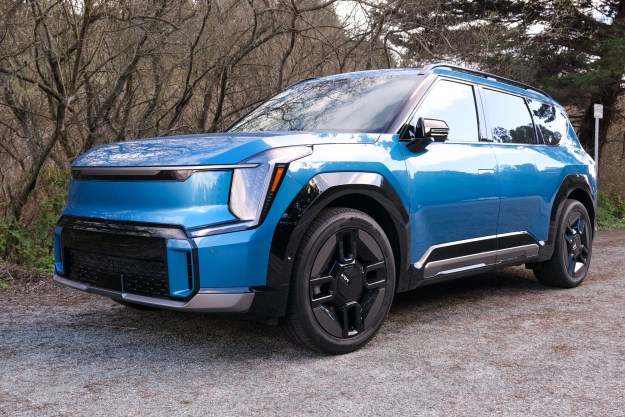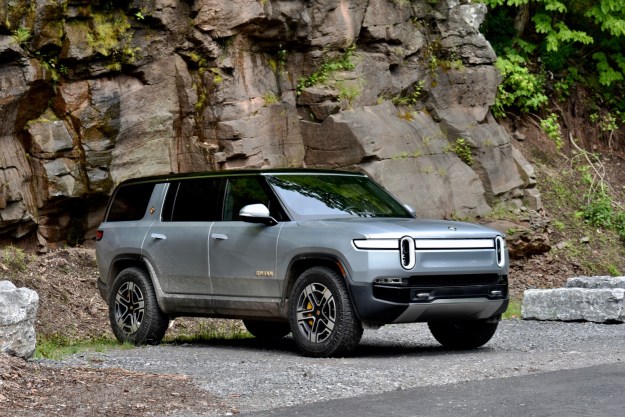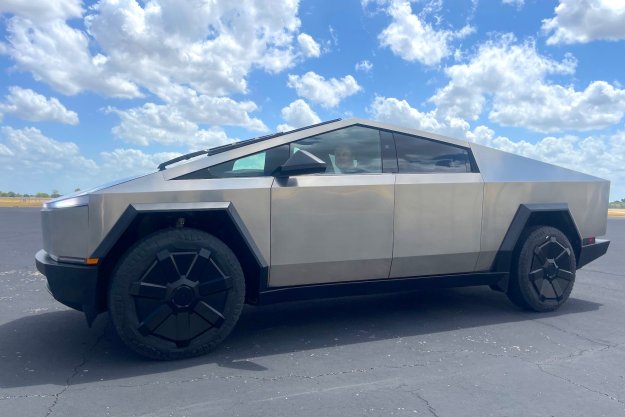In applying the Spyder treatment to the Huracán, Lamborghini has somehow managed to make the supercar even more visually striking while keeping its performance credentials and daily driver livability intact.
As President and CEO of Automobili Lamborghini Stephan Winkelmann competed for volume supremacy with the torrential downpour outside the presentation room, the irony of the Huracán LP 610-4 Spyder’s “Own The Sky” tagline was not lost on his audience – particularly as we watched the Italian convertible supercar tear a hole in the storm clouds above it by the sheer force of its awesomeness during the video that preceded our technical briefing.
As the rain continued to pound the rooftop and we wondered whether the thunder was coming from the conference room speakers or the heavens above, it was that imaginary feature that we all certainly longed for. But as it turns out the Huracán LP 610-4 Spyder doesn’t actually need such sorcery – as long as you keep the speedo above 63 miles per hour at all times, as one of my astute colleagues noted at lunch, you can essentially “outrun” the rain. It was a challenge we happily accepted.
Phase three
It’s difficult to overstate what a sales success the Huracán has been for Lamborghini. To put it in perspective, the automaker sold just over 14,000 examples of its predecessor, the Gallardo, in total – a figure that exceeded all other Lamborghini models sold in the company’s history combined. In the Gallardo’s first 16 months on sale, Lamborghini sold 1,751 examples of the car. In the same amount of time, the company has sold more than 3200 Huracáns since its debut in 2014, or nearly double the amount of its historically well-received predecessor.

This success has given Lamborghini the ability to swiftly move through the development of the two subsequent variants that the company already had in mind when developing the Huracán LP 610-4 coupe – the rear-wheel-drive LP 580-2 and this model, the LP 610-4 Spyder.
Convertibles are often referred to as “lifestyle” models in industry parlance. It’s a nice way of saying that these are variants which forfeit some performance substance in the name of bolstered style. Cutting the top off of a vehicle has some inherent performance drawbacks, and chief among them is a loss of rigidity because the roof is no longer acting as a piece of the car’s structural equation.
To address this, automakers put additional support in the chassis of the car to restore the rigidity lost. This, along with the mechanicals required for soft top’s automated operation, equates to additional weight – some 250 pounds of it in the Huracán Spyder.
And while that means the Spyder is half a breath slower than its hardtop counterpart, from behind the wheel the experience is no less exciting – especially when the wind is rushing by as you open up the taps and let the 5.2-liter V10 sing.
Form and function
While the Spyder gains some mass versus the Huracán coupe, it’s far from being a performance slouch. Its torsional stiffness is some 40% greater than that of the Gallardo Spyder, and even with the additional heft, the new convertible still manages a dry weight of under 3400 pounds. With 610 horsepower and 413 pound-feet of peak output under foot and one of the fastest, most well-behaved dual-clutch gearboxes in the industry connected to it, the Huracán Spyder is officially capable of hitting 62 miles per hour from rest in a conservative 3.4 seconds, though we have little doubt that instrumented testing will show the car to be at least a tenth or two quicker than that.
While the Spyder gains some mass versus the Huracán coupe, it’s far from being a performance slouch.
It’ll also capable of hitting 201 miles per hour whether you have the soft top up or down, and with the V10’s 8,250 rpm redline, I would highly suggest the latter whenever possible to get the full effect of the Huracán’s variable mode exhaust system.
Much like the Huracán coupe, one of the most striking features of the Spyder is how easy the car is to live with whether you’re charging up a mountain pass or crawling along in urban gridlock. Much of this livability can be credited to the aforementioned seven-speed transmission. It is simply worlds apart from the six-speed unit used in the Gallardo, a gearbox which gained a reputation for its harsh treatment of the vehicle’s occupants in the pursuit of fast gear changes.
While the Huracán’s shifts are so quick that power delivery is ostensibly seamless when the car is driven in anger, it’s the unobtrusive, smooth operation of the gearbox at low speeds that impresses the most – an aspect of DCT units that manufacturers rarely get right, and one that allows the Huracán Spyder to remain comfortable to drive even in the worst rush hour traffic.
And you’ll appreciate that low speed compliance because that’s where you’ll really be able to see all the stares. While the hardtop Huracán is undoubtedly a striking design, the Spyder is perhaps even more compelling. Lamborghini considered giving the Huracán Spyder a convertible hard top rather than the soft top found here, but opted against it because it would compromise the car’s form too much.
It seems like that was a wise decision, as the Spyder is certainly a sight to behold. It cuts a slightly different figure than the coupe whether the top is up or down, largely due to the fins that gradually rise up from the rear deck to meet the back of each seat, giving the Spyder an even more sculpted, form-fit look than the coupe. On the road, the three-layered top offers significant isolation from road noise when it’s up, yet it only takes 17 seconds for the electronics to stow it away when you’re itching for some fresh air and an added dose of visual drama.
Although this roadster is billed as the “lifestyle” iteration of the Huracán, the automaker has ensured that it is properly outfitted for the rigors of the racetrack. Six piston calipers up front and four piston units in the rear clamp down on carbon ceramic discs installed on all four corners. Predictably, it makes for some brake noise around town, but it’s reasonable to expect that brake fade is non-existent with this setup when faced with the abuse of repeated road course laps at qualifying pace.
Recaro-style sport seats also grace the options sheet, though I can’t in good conscience recommend them unless you’re really serious about doing a significant amount of track work with the car – our tester was outfitted with them and both my driving partner and I found ourselves complaining about the relative lack of padding and the fixed positioned of the seatbacks after just an hour or two in the car. Last year I had a chance to spend some time in a Huracán with the standard seats and I’d consider them to be bolstered well enough for occasional track day use and far more comfortable for long stints behind the wheel. Your mileage may vary, of course.
Owning the sky – or just ignoring it
By the middle of the day the skies had mercifully cleared up enough to get a few hours in of drop-top motoring on dry tarmac, but little changed about our driving behavior or enjoyment behind the wheel. The Huracán’s Audi-derived all-wheel drive system makes the car incredibly sure-footed regardless of road conditions, which means it’s engaging to drive even when the skies aren’t being particularly cooperative. You’d be forgiven for not wanting to soak the Alcantara-appointed interior in rain water or risk letting moisture have its way with the electronics behind the sharp 12.3-inch TFT display, but this Spyder shrugged off the inclement weather regardless, unwilling to concede as much as a hiccup throughout the day.

And although the looks and performance of this Italian drop-top might get all the attention, that is one of the most remarkable aspects of this car – that it truly can be driven every day of the year without the need to put a tow truck service on speed dial. That might not look particularly sexy on a spec sheet, but all the performance in the world doesn’t mean a whole lot unless you can use it, and the Lamborghini Huracán LP 610-4 Spyder is proof that you can have it both ways. Just remember to keep it above 63 miles per hour whenever possible.
Highs
- Breathtaking looks
- Incredible performance
- Surprisingly easy to live with day to day
- Fast convertible top operation
Lows
- Noisy carbon ceramic brakes
- Very limited cargo space
Editors' Recommendations
- Lanzador concept previews Lamborghini’s first EV
- Lamborghini’s first EV will be ‘mature’ and based on the Taycan, report says







